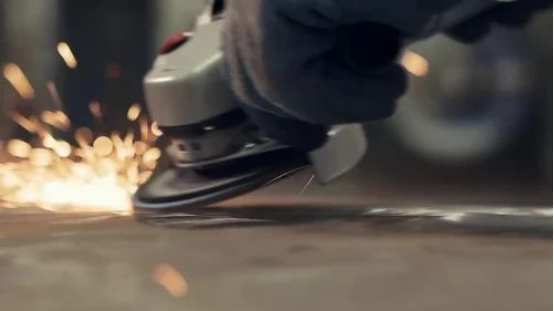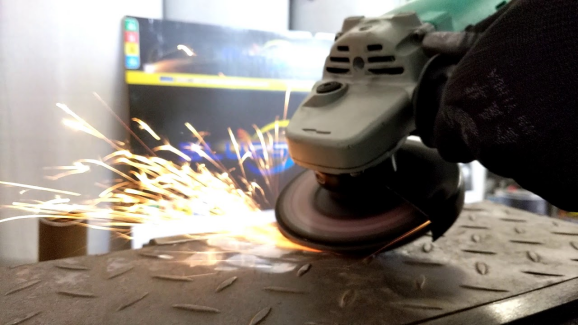Grinding aluminum requires the right tools and techniques to achieve optimal results. Aluminum, known for its lightweight and versatile properties, is commonly used in various industries. When it comes to aluminum grinding, it’s essential to use suitable abrasive tools that can effectively remove material while providing a smooth finish. In this article, we will explore the process of grinding aluminum and discuss why flap discs are considered the best choice for this task. We’ll provide step-by-step instructions, address concerns related to aluminum grinding, and share valuable tips to ensure successful results.
Can You Use Flap Discs for Aluminum?
Yes, flap discs are suitable for grinding aluminum. They are highly versatile and can be used on a variety of materials, including metal, wood, and plastics. However, specific flap discs designed for aluminum grinding are recommended to ensure maximum efficiency and a smooth finish.
What Are Flap Discs?
Flap discs are abrasive tools commonly used in grinding and finishing applications. They consist of multiple overlapping flaps of abrasive material (usually coated with aluminum oxide or zirconia alumina) that are adhered to a backing plate. The flaps are angled in a way that exposes fresh abrasive material as the disc wears down, resulting in consistent grinding performance throughout its lifespan.
Why Flap Discs Are Best for Aluminum Grinding?
There are several reasons why flap discs are considered the best choice for aluminum grinding:
- Versatility:Flap discs can efficiently remove material and provide a smooth finish, making them suitable for both stock removal and finishing operations.
- Cool Grinding: The design of flap discs allows for better airflow during grinding, reducing heat build-up on the workpiece. This is particularly important when grinding aluminum, as excessive heat can lead to melting or warping.
- Consistent Performance:As the flaps wear down, fresh abrasive material is exposed, ensuring consistent grinding performance throughout the entire lifespan of the disc.
- Reduced Vibrations:Flap discs are designed to reduce vibrations during grinding, resulting in a more comfortable and controlled grinding experience.
How to Grind Aluminum with Flap Discs: Step-by-Step Guide
Now let’s discuss the step-by-step process for grinding aluminum using flap discs:
Step 1: Safety Precautions
Before starting any grinding operation, ensure that you have the necessary safety equipment, including safety glasses, gloves, and a dust mask. Aluminum grinding can generate fine particles that are harmful if inhaled, so it’s essential to protect yourself.
Step 2: Selecting the Right Flap Disc
Choose a flap disc specifically designed for aluminum grinding. Look for discs with a grit size appropriate for your desired finish. Coarser grits (e.g., 40 or 60) are ideal for stock removal, while finer grits (e.g., 80 or 120) are suitable for finishing operations.
Step 3: Mounting the Flap Disc
Attach the flap disc to a compatible angle grinder or grinding tool. Follow the flap disc manufacturer‘s instructions for correct mounting and ensure the disc is securely fastened.
Step 4: Grinding Technique
Hold the angle grinder with a firm grip, using both hands. Start grinding by gently applying the flap disc to the aluminum surface at a slight angle. Avoid excessive pressure, as this can cause heat build-up or gouging.
Step 5: Grinding Direction
For optimal results, it’s generally recommended to grind in a consistent direction, either from left to right or in a circular motion. This helps maintain an even finish and prevents uneven wear on the flap disc.
Step 6: Workpiece Cooling
To prevent overheating of the aluminum, periodically pause grinding and allow the workpiece to cool. This can be done by moving the grinder away from the workpiece or by lightly misting the aluminum surface with water.
Step 7: Finishing Touches
Once you have achieved the desired grind, switch to a finer grit flap disc or a flap disc specifically designed for finishing. This will help refine the surface and create a smoother finish.
Concerns Regarding Aluminum Grinding:
- Fire Hazard: Aluminum grinding can create sparks, which may ignite flammable materials. Ensure you are working in a well-ventilated area and keep flammable substances away from the grinding area.
- Dust Collection:Aluminum grinding produces fine particles that can be harmful if inhaled. Use a dust collection system or wear a dust mask to minimize the risk.
- Material Compatibility: Ensure that the flap disc you choose is specifically designed for aluminum grinding. Using the wrong type of flap disccan result in poor performance, increased wear, or damage to the workpiece.
Tips for Grinding Aluminum with Flap Discs:
Start with Light Pressure: Begin grinding with light pressure to avoid gouging or creating deep scratches. Gradually increase pressure as needed.
- Use Lower Grinder Speeds:Lower grinder speeds reduce the risk of overheating the aluminum. Adjust the grinder speed to a level suitable for aluminum grinding.
- Avoid Excessive Heat: Aluminum can easily be damaged by excessive heat. Allow the workpiece to cool periodically to prevent overheating and potential warping.
- Choose the Right Grit Size: Selecting the appropriate grit size is crucial for achieving the desired finish. Coarser grits for stock removal and finer grits for finishing operations.
- Regularly Inspect the Flap Disc:Check the condition of the flap disc periodically during grinding. If the flaps are worn down or damaged, replace the disc to maintain optimal performance.
Conclusion:
Grinding aluminum with flap discs can yield excellent results when done correctly. By following the step-by-step instructions outlined in this guide, taking the necessary safety precautions, and considering the tips provided, you can achieve efficient and high-quality grinding outcomes. Always prioritize safety and ensure you use flap discs specifically designed for aluminum grinding to maximize performance and maintain the integrity of your workpiece.


